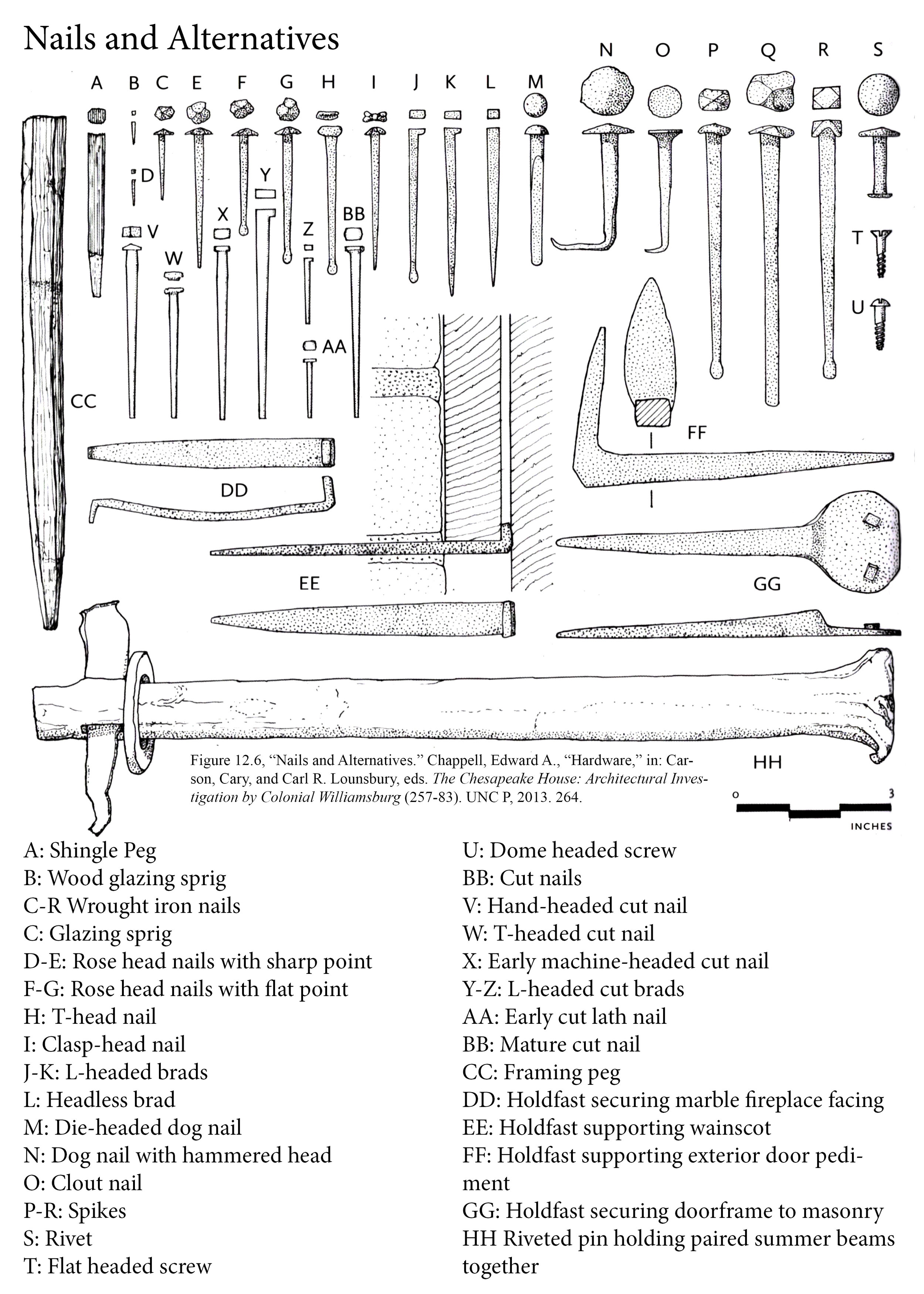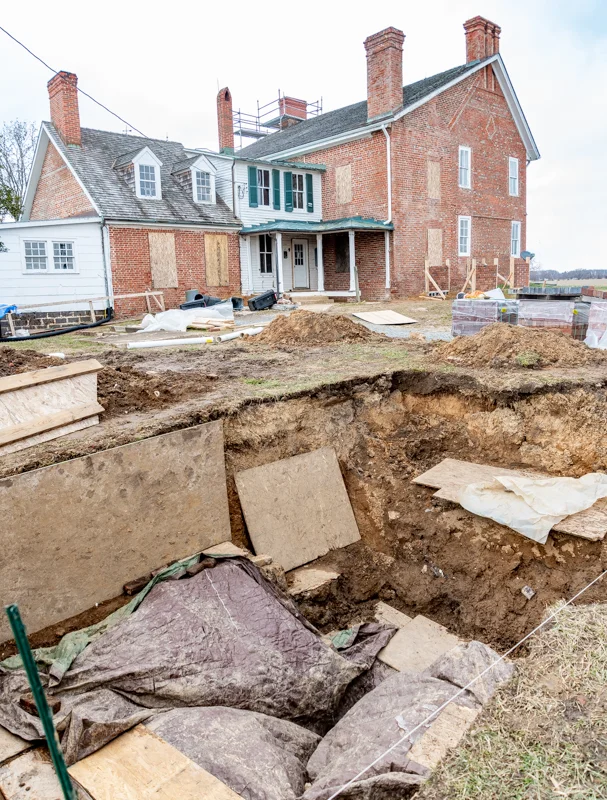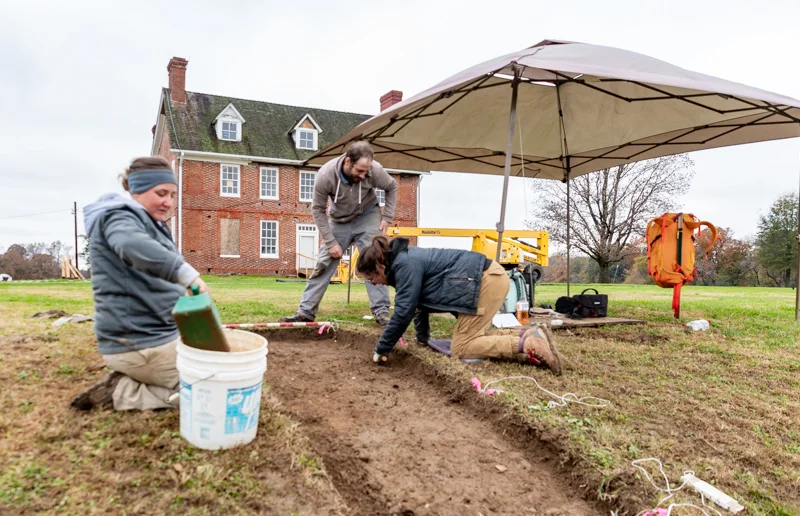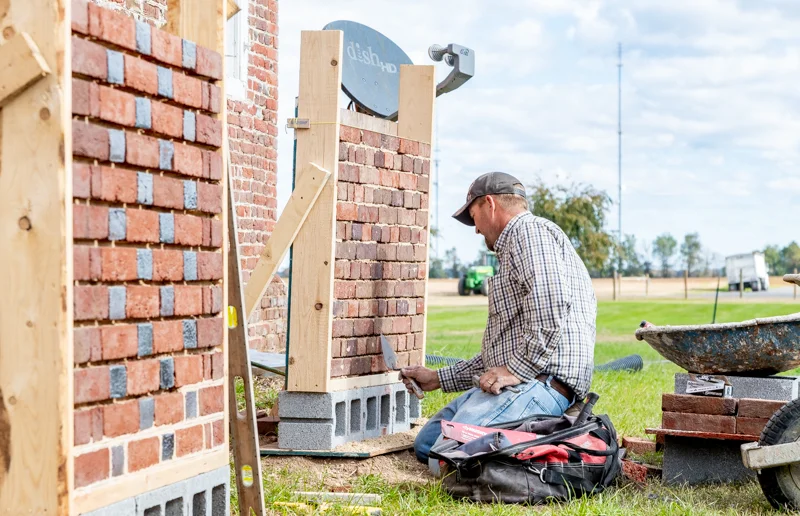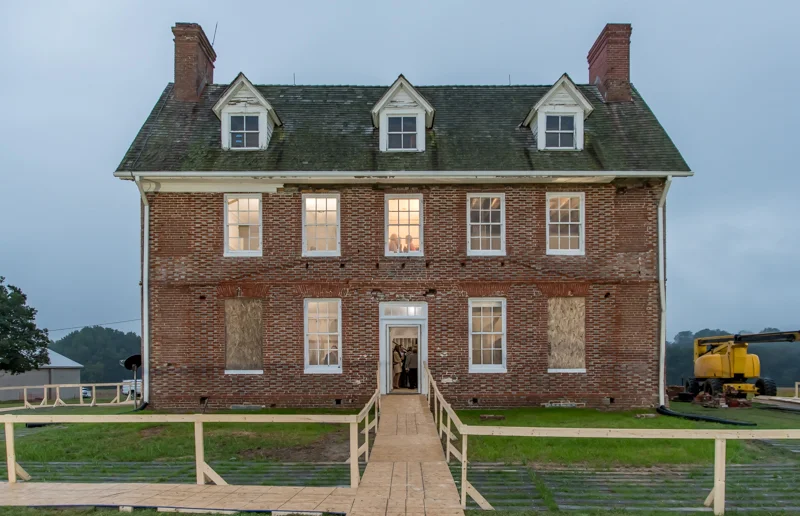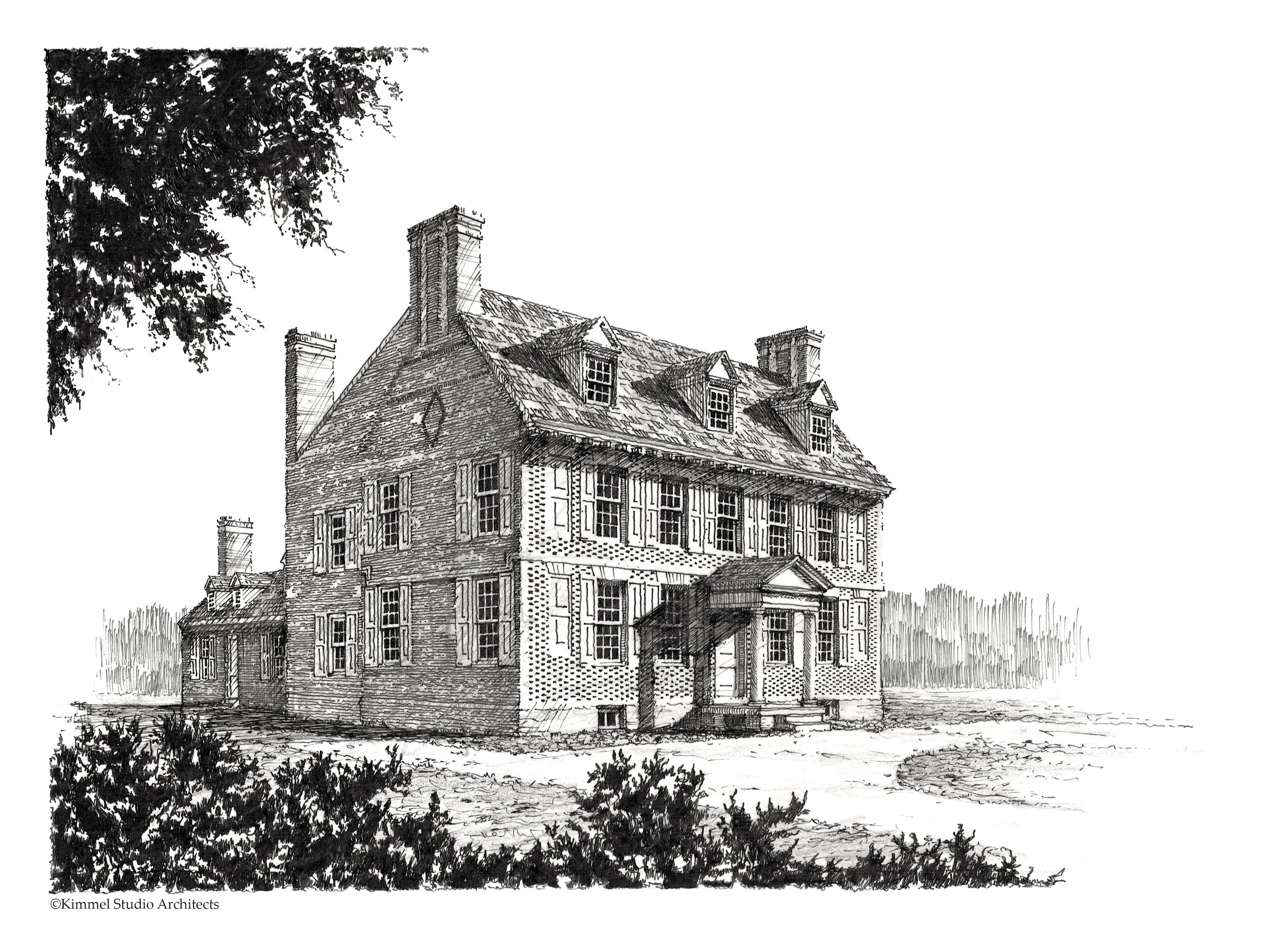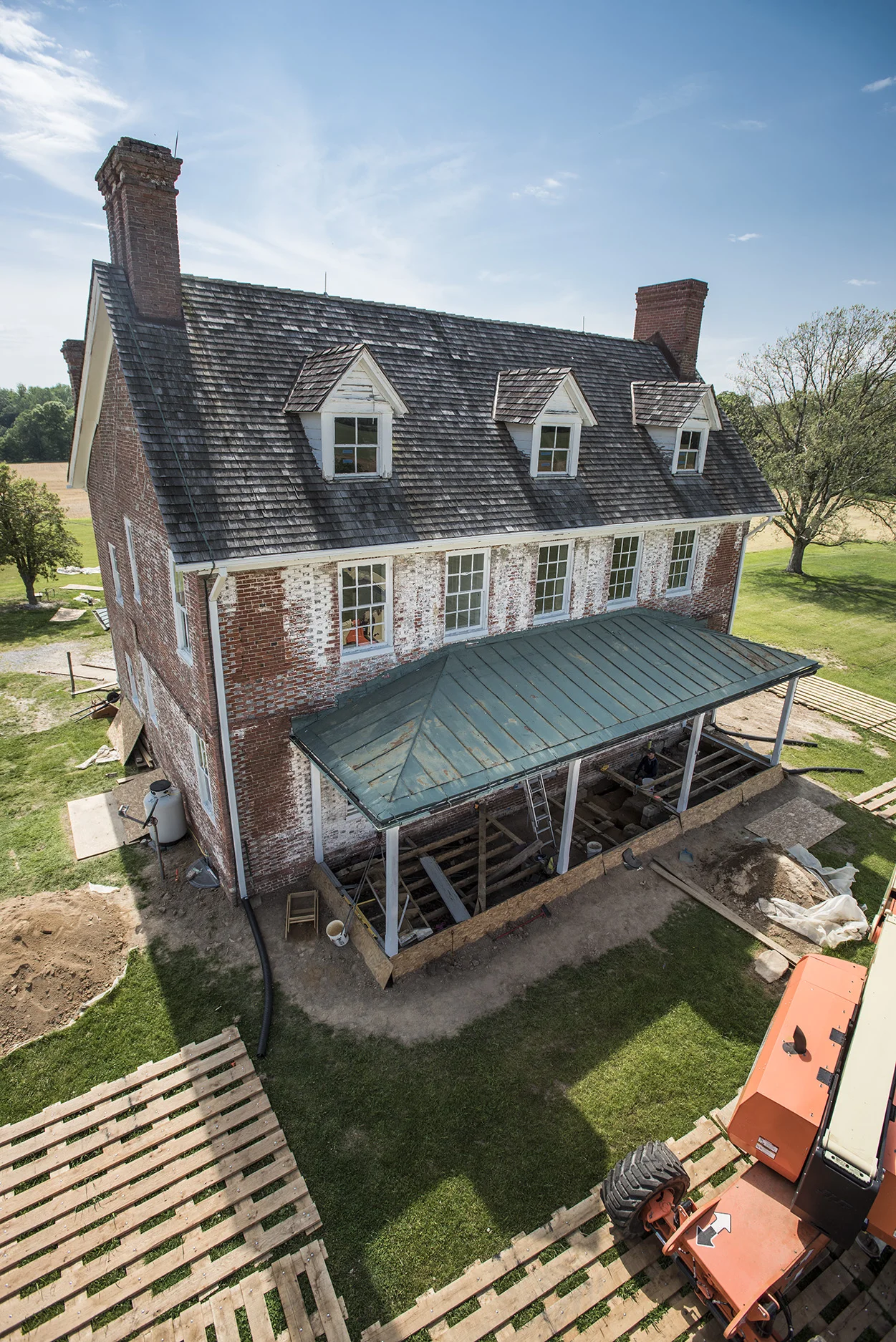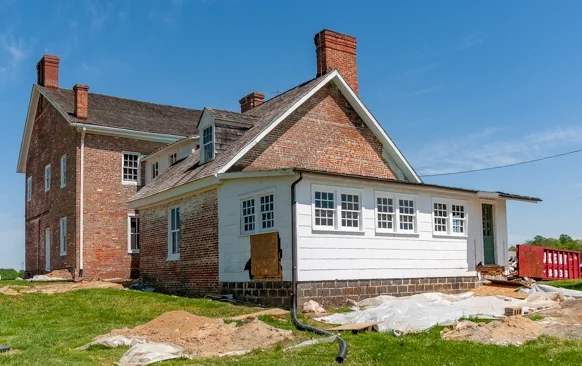The Cloverfields house is being rebuilt so that, in a few years, it will look pretty much as it did in 1784. It is in that year that wealthy planter, politician and Revolutionary War patriot, Colonel William Hemsley (1737-1812), is believed to have completed the decades-long redesign and expansion of his grandfather’s 1705 dwelling. While the current rebuilding takes place, the Cloverfields Preservation Foundation seeks to understand how Col. Hemsley furnished his ancestral home.
Historians and decorative arts specialists know the type of furniture and range of objects a family of the Hemsley’s status typically displayed in each room, but however deep their general knowledge of eighteenth-century decor, the answer to specific questions requires extensive research. To learn, for example, how many chairs the Hemsleys kept in the dining room, if they placed a carpet in the entry hall, or how many family members slept in a particular room, the Foundation’s research team is turning to historic estate inventories records.
Read More
